When exploring the world of Korean alcohol, you'll likely encounter both soju and makgeolli. These two traditional Korean drinks offer distinct flavors and cultural significance, as well as wildly different global distribution.
Soju, a clear liquor with a sharp kick, has a higher alcohol content, while makgeolli sports a milky finish and a sweeter, more approachable taste. Venturing further, you'll find that soju is distilled and can pack quite the punch, typically falling between 12-20% alcohol by volume, depnding on the flavor.
Meanwhile, makgeolli is a fermented rice wine with a lower alcohol content, usually 5-8% ABV. It's not just about the potency, though; the two drinks are steeped in tradition, and each has a unique place at the Korean table.
The choice between the two might depend on your mood or the occasion. If you're up for a smooth, potent sip, soju could be your go-to. But if you're after something gentler, with a touch of sweetness, then makgeolli might just hit the spot - but no matter your preference, both serve as a great introduction to Korea's rich alcohol heritage.
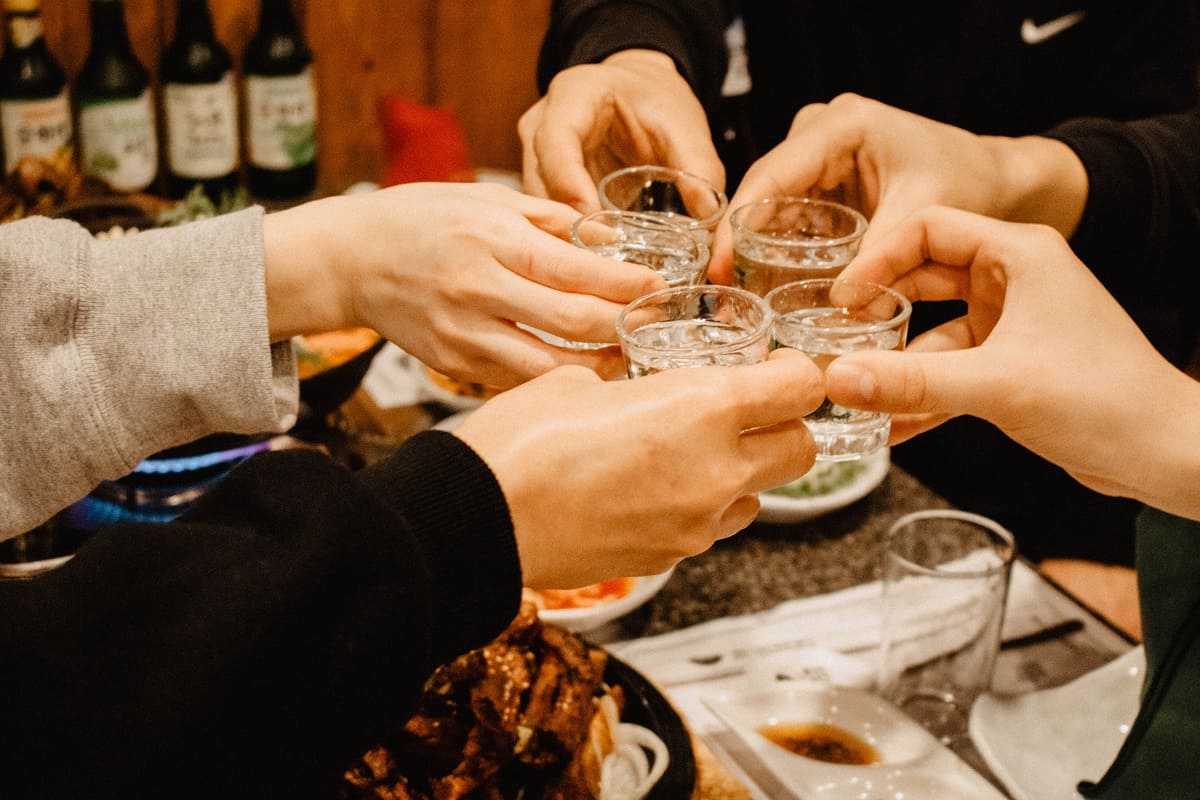
Jump to:
🥂 Cultural Significance of Soju and Makgeolli
Exploring soju and makgeolli, you'll discover they're more than just drinks; they're woven into the fabric of Korea's soul.
Role in Korean Culture
Both makgeolli and soju hold special places in Korean celebrations. Soju is typically chosen at business dinners or during lively nights out with friends, symbolizing modern Korean drinking culture.
Meanwhile, makgeolli connects you to the rural past of the Koreas, often enjoyed by farmers and at traditional festivals, reflecting the hearty, earthy soul of Korea.
Historical Context
Makgeolli's roots run deep, dating back to when peasants and farmers in Korea would savor its sweet, milky taste. It's a drink that's stood the test of time, even through wars and colonization.
On the other hand, soju's clear, potent spirit became synonymous with resilience and camaraderie, particularly post-Korean War, shaping a significant part of contemporary cultural identity.
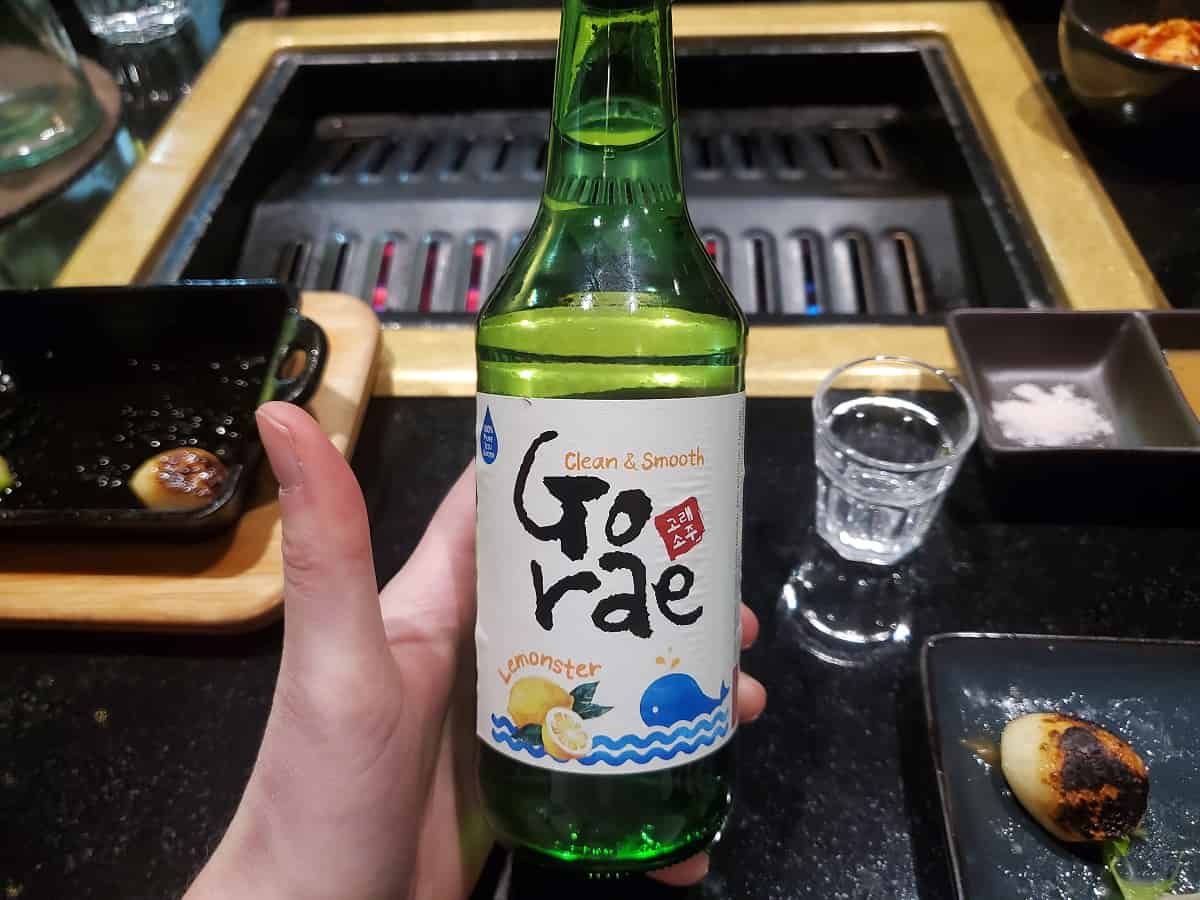
🍶 Production and Ingredients
In exploring soju and makgeolli, you'll find their production processes and ingredients set them apart in the world of spirits and wines. While they both start with grains, the transformation they undergo is unique to each beverage.
Makgeolli Brewing Process
Makgeolli is traditionally brewed from rice, which is mixed with water and a fermentation starter called nuruk.
This mixture undergoes a fermentation process to create a sweet and milky takju with an alcohol content ranging between 6-8%. Brewers often adjust ingredients like barley, wheat, or corn for nuanced flavors.
Soju Distillation Process
Soju starts similarly but takes a sharper turn with distillation. Post-fermentation, grains like rice, barley, sweet potatoes, or tapioca become the base for this clear spirit. This process heightens the alcohol level to 12-20%, resulting in the crisp, potent drink often served in shots or mixed into a soju bomb.
Common Ingredients Used
You'll find overlapping ingredients in both soju and makgeolli— primarily rice and water, yet unique additions like sweet potato or wheat can be introduced.
Soju may even include starches like tapioca, while nuruk is central to makgeolli's brewing. Each drink incorporates these elements to achieve its distinct taste profile.

🍹 Types and Varieties of Soju and Makgeolli
You'll find a delightful range of types and varieties when exploring the world of makgeolli and soju. Let's dive into the unique flavors and characteristics that make these Korean beverages favorites among enthusiasts.
Different Types of Makgeolli
Makgeolli, known for its gentle effervescence, comes in different types including yakju, a clear rice alcohol, and various cloudier versions that are more common. You'll find flavors infused with fruits like banana and strawberry, giving you a sweet twist on this traditional Korean rice wine.
Various Soju Flavors
Soju presents a spectrum of flavors extending from the classic clear spirit to modern infusions like grape, peach, and even green apple. Each soju flavor profile enriches your drinking experience, taking the simple rice alcohol to new, fruitier heights, like the ever-popular strawberry soju.
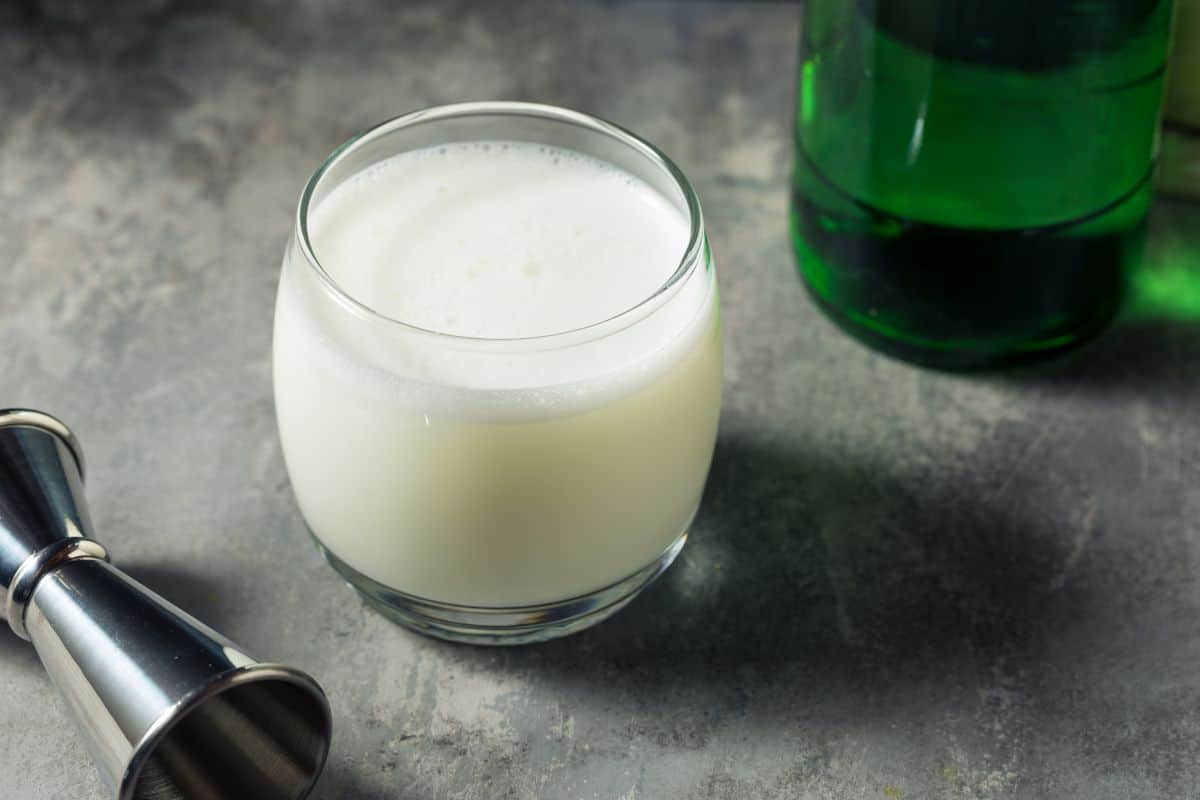
🥤 Various Fun Facts
Alcohol Content
Soju is a clear spirit with a higher alcohol content than makgeolli, typically around 12-20% ABV. This makes it a strong choice for soju cocktails but means you'll want to consume it in moderation.
Health Benefits of Traditional Drinks
Makgeolli offers more than just a buzz. Being an unpasteurised traditional drink, it contains beneficial bacteria that can support your gut health. Plus, it's often slightly more nutritious compared to the more neutral profile of soju, though it's much less common globally.
Popularity Trends
Soju has become a versatile fixture in modern bars, not just in Korea but worldwide. You might even enjoy soju bombs at parties, a testament to its popularity.
For Makgeolli, traditional consumption has evolved; cream and fruit-flavored versions are catching on, attracting those who appreciate a tangy flavor, though it's still markedly less common.
Influence of K-Pop and K-Drama
The K-pop and K-drama waves have elevated Korean drinks to iconic status. You've likely seen your favorite stars like Kim Min-Kyu sipping on premium Makgeolli or mixing a hip Makgeolli cocktail.
Korean media's cultural significance has made traditional drinks trendy and popular among young drinkers and entrepreneurs keen on innovation.
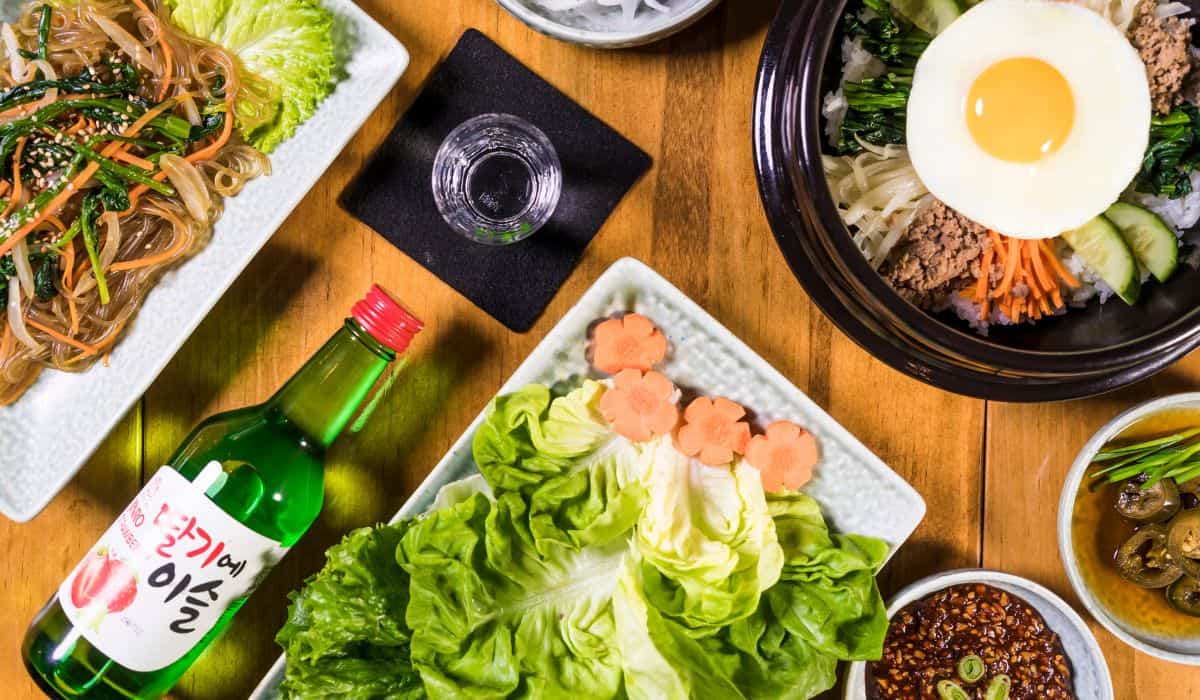
🍽️ Food Pairings & Tips
Soju Pairings
Soju's clean and neutral taste makes it a perfect partner for many Korean dishes. Try pairing it with bold and spicy foods such as Korean BBQ or tangy kimchi. The higher alcohol content cuts through the richness, balancing out the flavors on your palate.
Makgeolli Combinations
Makgeolli, with its slightly sweet and tangy profile, goes well with hearty, savory dishes. Enjoy it with a Korean pancake on a rainy day for a comforting experience. Its unique flavor can also complement lighter fare, such as seafood pancakes, enhancing the meal's overall taste.
Serving Suggestions
Soju is traditionally enjoyed neat, often as a shot, and serves as a versatile base for many a cocktail. Makgeolli's low alcohol content makes it great for sipping or as part of a low ABV makgeolli cocktail.
Serve it chilled, and don't forget to give the bottle a gentle shake if it's unfiltered, to mix the sediments (which are also quite flavorful).
Storage and Preservation
Both soju and makgeolli should be stored in a cool, dark place. Once opened, makgeolli, a type of rice wine, should be kept in the fridge and is best enjoyed within a few days, while soju, being a distilled spirit, lasts many month and maintains its flavor even when stored at room temperature.
Finding Quality Soju and Makgeolli
Look for a higher ABV if you want a stronger soju brand. For makgeolli, seek out bottles that say "unpasteurized" for a fresher, richer flavor. Remember, quality makgeolli will often have deposits at the bottom, so don't be put off by this— it's a good sign!

🍷 The Future of Korean Alcoholic Beverages
You'll notice traditional Korean drinks are becoming hip, partly thanks to K-pop influence. Premium makgeolli varieties are rising, catering to sophisticated palates seeking quality over quantity.
Entrepreneurs are the lifeblood of this innovation. Both inside Korea and out, they're experimenting with makgeolli brewery techniques and local ingredients, crafting drinks that embody a modern yet distinctly South Korean spirit.
The Global Market Influence
As Korean alcohol grows in popularity, its reach extends globally. You'll see South Korea's traditional beverages influencing the global market—makgeolli and soju aren't just drinks; they're cultural ambassadors.
Traditionally, Koreans even enjoy Makgeolli in a communal setting. It’s often shared from a single bowl, usually from a large copper pot, and enjoyed along with anju, which are small plates of food.
♻️ Environmental and Ethical Considerations
Eco-Friendly Production Methods
You'll appreciate knowing that many makgeolli producers are embracing eco-friendly practices, using organic rice, and reducing waste. However homebrewing makgeolli can still be a greener option, as it often involves minimal processing and lower transportation impacts.
Social and Cultural Responsibility
The production and consumption of soju and makgeolli hold deep roots in Korean culture and tradition. Supporting products that respect these traditions can help preserve an important cultural heritage while contributing to ethical economic practices.

❓ Frequently Asked Questions
Soju offers a clean, crisp taste with a sharp alcoholic bite due to distillation. In contrast, Makgeolli is mildly sweet with a creamy texture, much like a tangy rice-based yogurt.
Soju typically has an alcohol content ranging from 16% to 45%, making it stronger than Makgeolli. Makgeolli usually contains about 6% to 8% alcohol, similar to many beers.
Yes, there's a difference - much like beers versus liquors, soju is lower in calories than Makgeolli, which has a higher calorie count due to its residual sugars.
Makgeolli is unique due to its unfiltered, milky consistency and natural sweetness. Unlike sake, which is more refined, Makgeolli retains the grains of rice it's brewed from.
Soju is the most popular choice in Korea, renowned for its versatility and high alcohol content. However in recent years, makgeolli has seen a resurgence, particularly among the younger generation seeking traditional flavors.

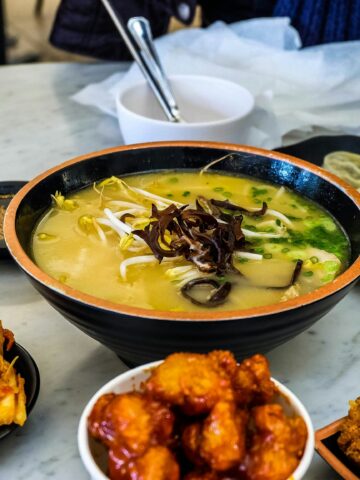
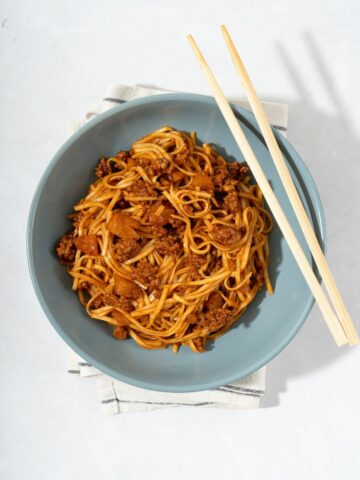

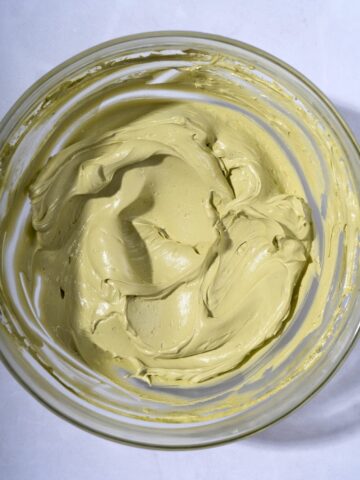
Comments
No Comments